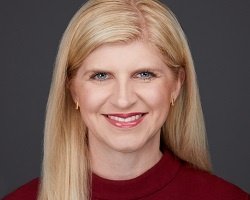Why Gender Equality in Public Relations is Not a Woman’s Issue, But an Everyone Issue
 Tina McCorkindale, Ph.D., APRThe Institute for Public Relations and KPMG have partnered on a two-part research study to address how the public relations industry can achieve progress on gender equality that empowers and moves more women into leadership positions.In the first part of our study, we conducted 10 focus groups with both men and women, mid-level and senior-level, to find out their perception of gender equality. While most men said they had not experienced gender discrimination, most of the female respondents said they had. Additionally, in an industry that is more focused on inclusion, some female respondents said they felt “excluded.” Other findings include:
Tina McCorkindale, Ph.D., APRThe Institute for Public Relations and KPMG have partnered on a two-part research study to address how the public relations industry can achieve progress on gender equality that empowers and moves more women into leadership positions.In the first part of our study, we conducted 10 focus groups with both men and women, mid-level and senior-level, to find out their perception of gender equality. While most men said they had not experienced gender discrimination, most of the female respondents said they had. Additionally, in an industry that is more focused on inclusion, some female respondents said they felt “excluded.” Other findings include:
- Informal mentorships may work better than formal mentorship programs.
- HR policies were an opportunity for change—imbalanced policies create an imbalanced playing field.
- Work-life fit is an issue for both men and women who said they always felt pressure to be “on.”
- Both women and men acknowledged an industry pay gap.
The “Call-to-Action” includes:
- Gender equality is not just a cause for women but men, too.
- Imbalanced policies and pay gaps can be addressed by organizations now.
- Leaders must prioritize change and action, while having open conversations with their employees and the industry.
A message of inclusion does not convey a message of exclusion—both men and women, as well as trans and gender-fluid employees, deserve a seat at the table. In one of the best research reports on diversity, Boston Consulting Group surveyed women, employees of color, and LGBTQ employees to determine, among other things, the rankings of the most effective programs that organizations can implement to improve diversity and inclusion. For women, the top results were antidiscrimination policies, flexibility programs, parental leave (including for adoption), formal training to mitigate biases, visible role models in leadership, and appropriate health care coverage.Gender equality also gives everyone equal benefits and access, as well as equal opportunities. Equality also provides a level playing field and strengthens an organization’s culture. Our study found inconsistencies in terms of policies and opportunities in both public relations agencies and corporate communication departments. In some cases, women were granted longer maternity leaves, while men were given only two weeks; some men didn’t even take the full two weeks (or felt pressured to not take advantage of the full paternity leave)The second part of our study will be an industry-wide survey to achieve a broader understanding of the profession as a whole. While this study focuses on gender equality, we did interview men and women with other diverse characteristics, such as race and ethnicity and sexual orientation. The intersectionality, or interconnectedness of these categories, cannot be separated within the study so this is interwoven into the fabric of an individual. At the end of our next study, we hope to have specific action plans to help organizations improve diversity and inclusion in the profession, with a focus on equality for all.To read the full study and the stories of some of the respondents, visit https://instituteforpr.org/mind-the-gap-womens-leadership-in-public-relations/

